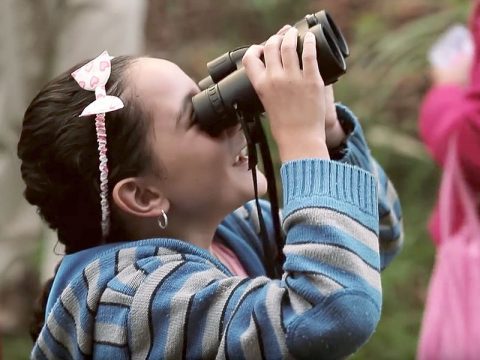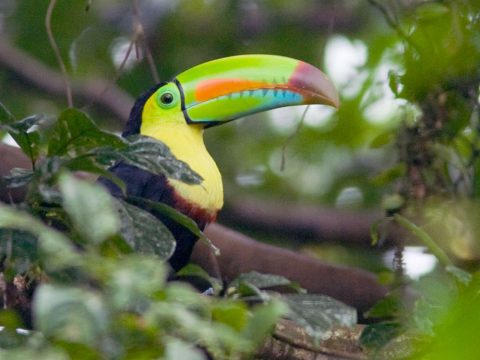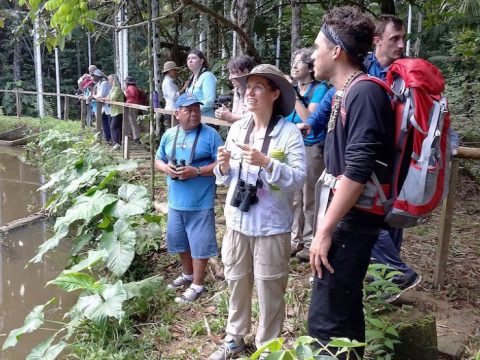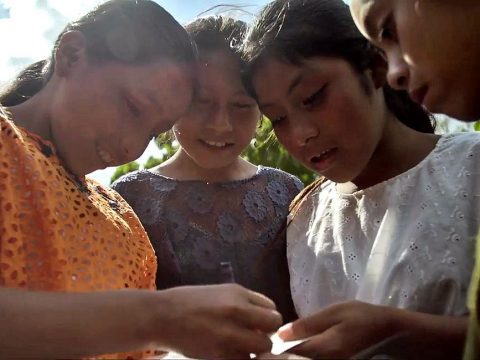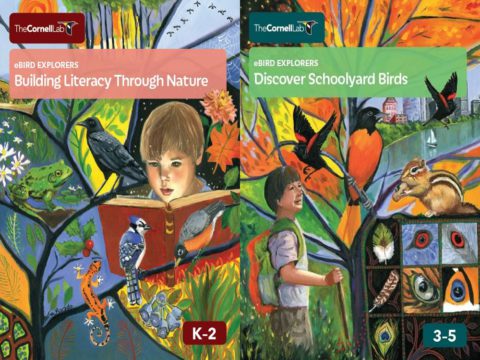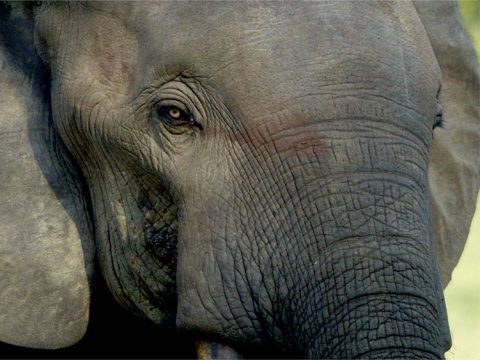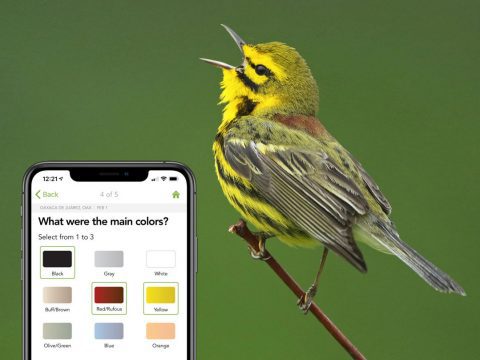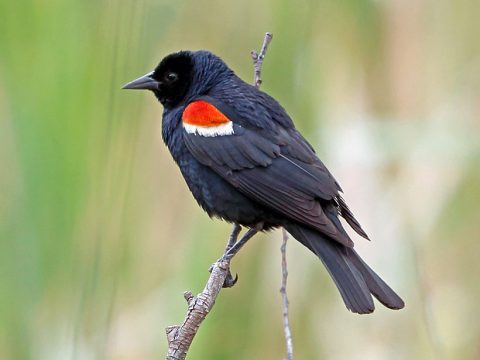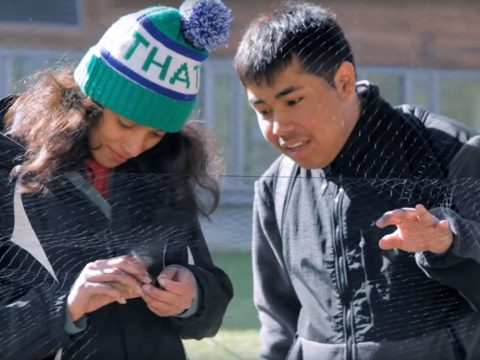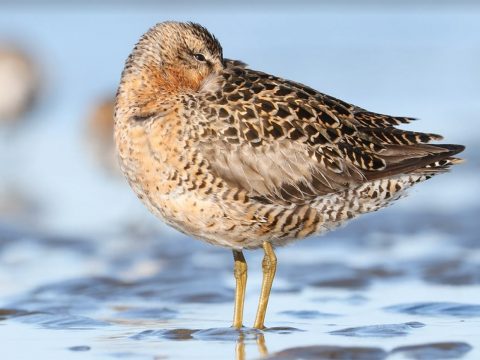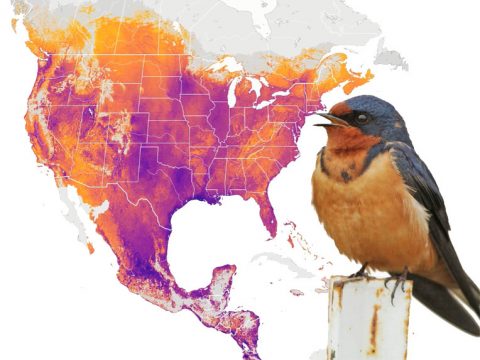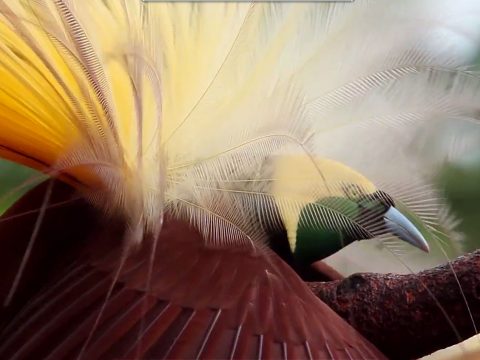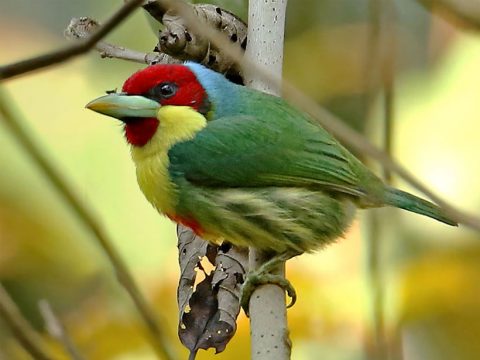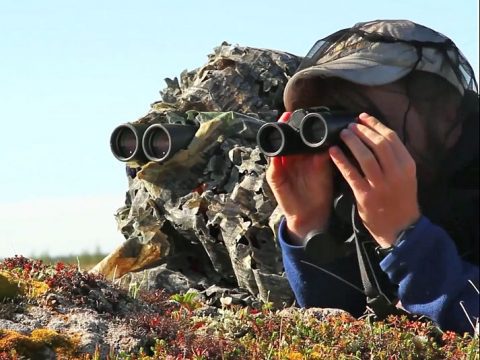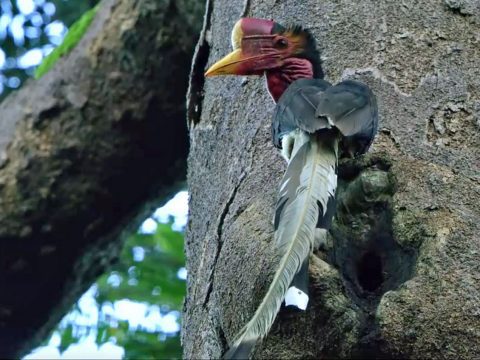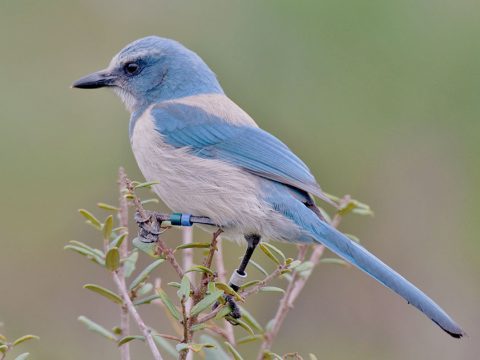In Costa Rica and Guatemala, Educators Bring Kids Close to Birds
NARRATOR: Educators around the world are inspiring children to care about the environment by connecting them to local birds and habitats. BirdSleuth International welcomed teachers from Costa Rica to an exchange program in the cloud forest of Guatemala. Their goal is to learn from each other.
PAULA MESÉN, TEACHER: I came to Guatemala to work with environmental educators here. And to see how they work with the BirdSleuth Program.
JENNNIFER SÁNCHEZ, TEACHER: Last night I almost couldn’t sleep! (laughs)…there was a lot of excitement, a lot of expectation.
CARLA AZOFEIFA, TEACHER: We are environmental educators and we believe in conservation. My expectation in coming to Guatemala is that each of us teachers that is participating may feel more strength and more courage and more love and more creativity when we go to our classrooms.
NARRATOR: BirdSleuth creates resources for teachers that build science skills. The curriculum also inspires young people to connect with their local habitats and engage in citizen science projects. The Costa Rican and Guatemalan teachers will spend the next several days exchanging ideas on how to best connect with students.
LILLY BRIGGS, CORNELL LAB: Once again good morning to all of you and welcome to the Bird Sleuth teacher Exchange.
VILMA TOC MAAS, TEACHER: I always ask them the question: “do you like birds?” The first thing they say is “no.” But I tell them that without birds we humans can’t live because they help us in many ways.
AZOFEIFA: It was a school that was very close to the city and the parents are farmers…
AZOFEIFA: And that is where Bird Sleuth comes in, to teach us how close we really are.
SÁNCHEZ: So, every time we see one they get very excited and say, “Wow, we haven’t seen this before!”
SÁNCHEZ: Much of the population really isn’t interested in the environment. We have many people, for example, that don’t have food to eat every day. And when you don’t have food to eat, conserving birds is probably not your main objective. And it’s an important challenge to connect with those people. The most important strategy to get these kids to connect with nature is to bring them close to it.
NARRATOR: During the week, local school children take part in the program. Participants have the chance to put the curriculum into practice.
MESÉN: When I begin a lesson on birds, in general, the students don’t know anything.
GILDA MACZ POOU, TEACHER: When the kids come, they are always excited to see all the lessons and especially to observe the birds.
AZOFEIFA: The program combines games with critical thinking and citizen science. It is very complete because of that.
MESÉN: It covers a lot without requiring a lot. Basically you can get things started by just getting the kids to move around.
NORMA: Group number five!
NARRATOR: In this simple game of tag, children cross a field carefully avoiding obstacles that birds face on their migration routes. Some of the kids dress as cats to represent predators… others are buildings and constructed dangers… and others are nets, representing illegal hunting.
SÁNCHEZ: They better understand how birds work, what they do in the ecosystem and what they can do to help them. I think that is a great accomplishment of the program.
TOC MAAS: I see that the kids’ mentality totally changes.
MESÉN: It is an amazing feeling to know that when you arrive at a classroom, they are waiting for you. That they don’t say, “No, here she comes, how boring.” Instead, “Here comes the teacher!” It is really great and exciting, I love it!
NARRATOR: At the end of the week, teachers share their ideas on how to improve the program and discuss what they’ve learned.
MESÉN: I have felt very enriched in knowing that I can count on more people that do environmental education, more people that devote themselves to birds, and that this is a family that is growing and growing.
MACZ POOU: We are fighting, trying to find a way to conserve our environment.
MESÉN: There is a common goal: that the kids learn about birds and that they learn about the environment. We may be here or there to create that awareness, and that is what keeps us close despite the distance.
SÁNCHEZ: It is almost impossible that a boy or girl who goes through BirdSleuth won’t feel a love for birds.
AZOFEIFA: Sometimes one might feel like they’re crazy, trying to work in conservation. And there are many people around that seem not to care, right? I believe that we can really do something… it gives me hope, yes!
End of Transcript
Watch as educators from Costa Rica and Guatemala share their experiences, learn from each other, and collaboratively contribute to ongoing research aimed at investigating the impact of the Cornell Lab’s BirdSleuth International program on youth knowledge, attitudes, and behaviors toward birds and the environment.
In nine countries from Nicaragua to Peru, Belize to Colombia, the Cornell Lab of Ornithology’s BirdSleuth International workshops encourage and equip educators in their quests to inspire kids and shape the conservationists of the future.
Your support helps the Cornell Lab’s K-12 program serve more than 1 million students each year through curricula, free downloads, interactive science kits, and hands-on educator workshops.
More Stories
 Conservation in ActionHow We Use Sound to Help Protect Elephants from Poaching
Conservation in ActionHow We Use Sound to Help Protect Elephants from Poaching Conservation in ActionCalifornia Protects Tricolored Blackbird After eBird Data Help Show 34% Decline
Conservation in ActionCalifornia Protects Tricolored Blackbird After eBird Data Help Show 34% Decline Conservation in ActionCoastal Solutions: Building a Bold New Community to Address the Shorebird Crisis
Conservation in ActionCoastal Solutions: Building a Bold New Community to Address the Shorebird Crisis Conservation MediaBirds-of-Paradise Help Inspire Conservation of Forests in West Papua
Conservation MediaBirds-of-Paradise Help Inspire Conservation of Forests in West Papua
Join Our Email List
The Cornell Lab will send you updates about birds, birding, and opportunities to help bird conservation. Sign up for email and don’t miss a thing!
Golden-cheeked Warbler by Bryan Calk/Macaulay Library

